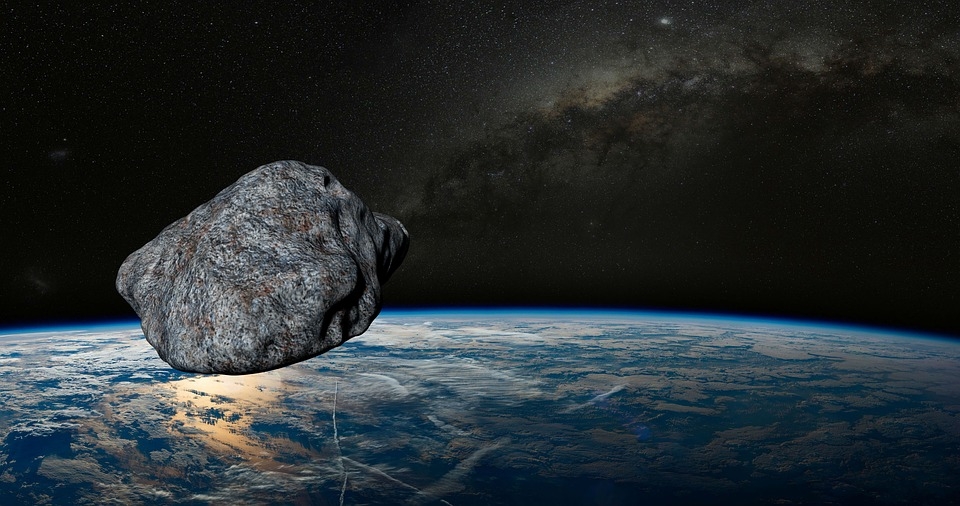US space agency NASA is always on the lookout for any potential threats that may come into Earth. Now, their asteroid trackers caught sight of a space rock large enough to be able to destroy an entire continent.
The agency’s asteroid trackers spotted a very large asteroid, now referred to as 2002 PZ39. It measures around 1,443 feet to 3,280 feet or one kilometer in diameter. The rock was also seen heading towards the Earth’s direction at a speed of over 35, 500 miles per hour. Due to its size, it has been classified as a Potentially Hazardous Object or PHO. NASA says that an asteroid this big can potentially wipe out millions of people if it ever crashes onto some land, and the consequences would be catastrophic, affecting the entire world aside from just the area it impacted.
PHOs can trigger earthquakes or cause tsunamis. For reference, the asteroid that caused the extinction of the dinosaurs millions of years ago was thought to be 10 kilometers wide.
PZ39 is expected to approach Earth on the 15th of February. At this time, the asteroid is predicted to be heading towards the planet at a speed of 15.19 kilometers per second or 35, 567 miles per hour. It will not strike the planet, but rather pass by. The closest this rock can get would be at 0.03860 astronomical units or in human terms; it will get as close as 3.58 million miles, which are still very far, but close enough to be noticeable.
However, it may be the first time PZ39 will fly by Earth, but it will not be the last. NASA believes that this asteroid may pay Earth another visit again in 14 years, in 2034.
Previously, scientists at the agency have revealed the actual chances of an asteroid strike. The chances may be very slim, but it is always a possibility. In any given year, NASA says that the chances of an asteroid impact would be at 0.1 percent. Should that 0.1 percent happen sometime in the future, there is a 70 percent chance that it will hit the water. Even if it manages to hit land, the agency says that there is a 20 percent chance it will land on an unpopulated area.



 The rising flood of space junk is a risk to us on Earth – and governments are on the hook
The rising flood of space junk is a risk to us on Earth – and governments are on the hook  The brightest object in the universe is a black hole that eats a star a day
The brightest object in the universe is a black hole that eats a star a day  Black hole, neutron star or something new? We discovered an object that defies explanation
Black hole, neutron star or something new? We discovered an object that defies explanation  Customizing mRNA is easy, and that's what makes it the next frontier for personalized medicine − a molecular biologist explains
Customizing mRNA is easy, and that's what makes it the next frontier for personalized medicine − a molecular biologist explains  The mystery of consciousness shows there may be a limit to what science alone can achieve
The mystery of consciousness shows there may be a limit to what science alone can achieve  Dark energy is one of the biggest puzzles in science and we're now a step closer to understanding it
Dark energy is one of the biggest puzzles in science and we're now a step closer to understanding it  Genetic diseases: How scientists are working to make DNA repair (almost) a piece of cake
Genetic diseases: How scientists are working to make DNA repair (almost) a piece of cake  Could a telescope ever see the beginning of time? An astronomer explains
Could a telescope ever see the beginning of time? An astronomer explains  Our survey of the sky is uncovering the secrets of how planets are born
Our survey of the sky is uncovering the secrets of how planets are born  How do airplanes fly? An aerospace engineer explains the physics of flight
How do airplanes fly? An aerospace engineer explains the physics of flight  Eggs from men, sperm from women: how stem cell science may change how we reproduce
Eggs from men, sperm from women: how stem cell science may change how we reproduce  Alpha, beta, theta: what are brain states and brain waves? And can we control them?
Alpha, beta, theta: what are brain states and brain waves? And can we control them?  Spacesuits need a major upgrade for the next phase of exploration
Spacesuits need a major upgrade for the next phase of exploration  Larger and more frequent solar storms will make for potential disruptions and spectacular auroras on Earth
Larger and more frequent solar storms will make for potential disruptions and spectacular auroras on Earth  Archeoastronomy uses the rare times and places of previous total solar eclipses to help us measure history
Archeoastronomy uses the rare times and places of previous total solar eclipses to help us measure history 































